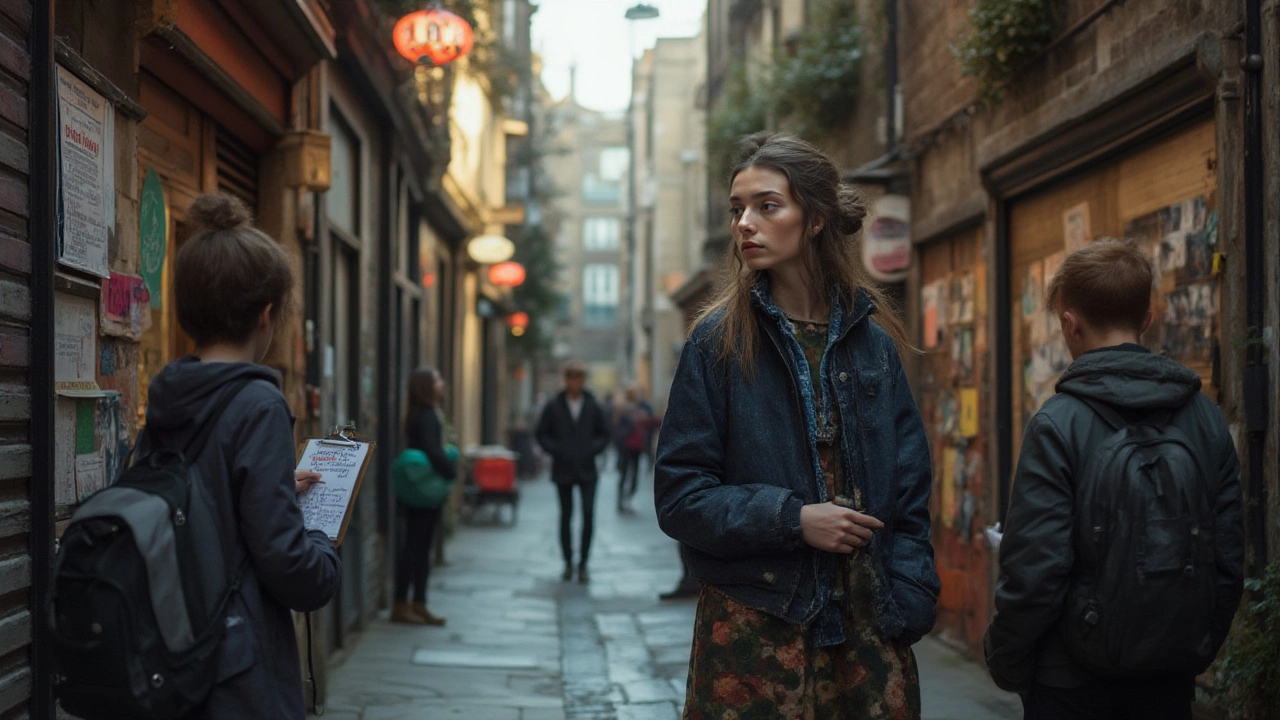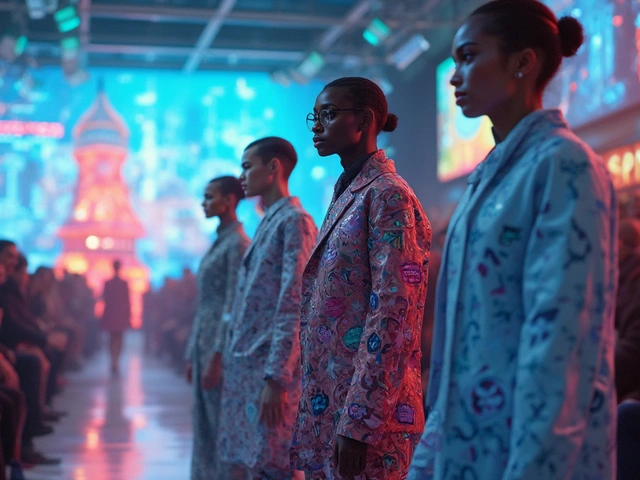You know that feeling when you see someone on a billboard, scrolling Instagram, or flipping through a magazine and think, “Could I do that?” Here’s the thing: that’s exactly how half the people you see land their first steps into modeling. It doesn’t always start with a fancy invitation. Sometimes, it’s just regular folks with confidence, patience, and a relentless streak who make it. If you’ve ever wondered if there’s space for you in this world, there absolutely is. You don’t have to be 6’0” and perfect-skinned. What modeling demands today is an honest kind of individuality—the sort you carry effortlessly. If you want to start your modeling career but have no clue where to begin, buckle up. I’m going to break down exactly how you can step in, stand out, and stick around.
What It Really Means to Become a Model Today
When you hear the word “model,” you might picture supermodels striding down Parisian runways or people with cheekbones sharp enough to slice bread. The big news is, the industry has unraveled. Now, modeling is as much about personality and diversity as classic looks. Traditional “runway” requirements do still exist—especially with big fashion houses. In a 2024 Statista report, the global modeling market reached about $5.6 billion. That’s not all fashion shows. Half of these jobs include commercial print, fitness, hand modeling, e-commerce, and tons you probably didn’t know existed.
Anyone can fit somewhere. And the demand for authenticity is stronger than ever. Brands chase relatability: freckles, gaps between teeth, tattoos, shaved heads. Age is also less of a gatekeeper than it used to be. A 2023 L’Oreal campaign featured models aged 18 to 69, all sharing the same spotlight. Petite, plus-size, mature, disabled—there’s a niche and agency for each.
The old “be seen, be discovered” fairy tale? Still happens (especially on TikTok, where scouts often trawl hashtags for new faces), but practical, consistent effort gets most people in the door. Agencies now accept digital applications. They don’t expect professional portfolios at the start—snapshots from your phone are fine, provided they’re clear, honest, and show you naturally.
Also, don’t get fooled by those “guaranteed modeling career” schemes. Legit agencies don’t charge upfront for photoshoots or representation. Real income comes from jobs—they take a commission, anywhere from 20% to 30%. Here’s a fun stat: According to a Forbes piece from Feb 2025, direct bookings through social media rose 35% in the last two years, with models negotiating gigs without agents. But agencies still dominate bigger contracts and regular work.
How to Get Noticed: Finding Your Lane and Building Your Book
This is where most people get stuck: they know they want to model but don’t know what to do with themselves in front of a phone or camera. Start by figuring out your own story. What sets you apart? Maybe it’s how expressive your eyes are, or how easily you wear confidence in loud colors. Find your niche—commercial print, fitness, lifestyle, alternative, high fashion, runway, petite, plus, mature, or character modeling (seriously, there’s a demand for distinct faces).
The “book” is model-speak for your portfolio. This doesn’t have to cost thousands. If you’re strapped for cash, rope in a friend with a decent phone camera. Go for a range of looks: natural, expressive, smiling, a neutral face, profile shots, full length, and whatever fits your niche. Ditch heavy makeup and editing. Agencies want to see you as you are. For digital applications, avoid filters or weird lighting. Natural daylight always wins. Set aside a simple outfit—well-fitted jeans and a plain tee often do wonders for showing off your proportions and shape.
Social media is a free springboard. Keep an Instagram or TikTok account strictly for modeling purposes—no clutter, just sharp images and videos that showcase your look, walk, range, and personality. Use relevant hashtags (like #newface, #modellife, #openstagemodel) and tag agencies. Many bookers now contact talent through DMs or tags.
Networking works. Attend open calls at agencies if there’s one in your city. These are usually free and informal—just show up, be yourself. Events like ModelCon LA or The Models’ Workshop offer workshops and meet-and-greets that can help you understand casting dynamics and see who’s looking for which kind of face. Sometimes, families bring their teens or young adults to these, just the way my spouse, Fiona, once dragged me, nervous and trembling, to a go-see (she swears the plain black tee was the lucky charm).

The Agency Search: How to Spot the Real from the Fake
So, agency or solo? Here’s the hard truth: if you want consistent, high-paying work and protection, agencies matter. But this is also where plenty of scams lurk. Always check if an agency belongs to respected organizations like the Model Alliance or has real reviews—Google them, scan through forums and social groups. Reputable agencies like IMG, Elite, Wilhelmina, Ford, and Select (yes, all still huge as of 2025) have clear, professional sites with guidelines for new faces. No agency should ever ask you to pay for representation or force you into contracts you haven’t fully understood.
The typical application asks for simple, no-nonsense images: one smiling headshot, one profile, one natural full-body, one in movement, and your measurements (height in cm/inches, chest/bust, waist, hips). Be 100% honest. There’s a growing push for transparency, so fudging your stats only bites you back after the first casting.
If you get a callback, you’ll usually meet the agency team—sometimes over Zoom, sometimes in person. Be yourself. Show personality. Agencies increasingly scout for people who not only photograph well but also communicate well in interviews and video calls (fashion brands now run remote campaigns, as proven by Gigi Hadid’s virtual shoot for Vogue in 2024).
Here’s a quick checklist to separate legit agencies from dodgy ones:
- They don’t ask for any fee upfront.
- Agency contract is clear and time-limited.
- They show you a roster of working models you can verify online.
- They answer all your questions and let you take the contract home to review.
- No pressure tactics—if they rush you, step away and think it over.
If you’re under 18, a legal guardian has to co-sign any contracts. Steer clear of flashy companies offering instant “fame packages.” Data from the Better Business Bureau in 2025 pegs modeling scams as the third most common career scam in the US. Protect yourself before you hurt your wallet.
Getting Cast and Building a Long-Term Career
Landing your first gig feels incredible—and nerve-wracking. Castings come in three main formats: open calls (walk in, present yourself), go-sees (you’re invited based on your portfolio or agency recommendation), and digital castings (submit a quick video intro and your best shots). Expect rejection. Even experienced models get turned down a dozen times for every one booking, so don’t take it personally. Use feedback to sharpen your look, poses, or communication.
For runway or fashion, posture is everything. Stand tall. Practice walking in front of mirrors, on all kinds of floors—awkward shoes and slippery runways are standard hazards, as I learned after nearly face-planting during a beachside show in Miami. If you’re aiming for commercial or print, focus on your expressiveness. Photographers want you to bring energy, stories, and mood to every shot.
Being freelance is more common than before. Freelancers approach clients directly, negotiate their own fees, copyright, and usage. This works well for niche markets like alternative fashion or local ad work, but for big campaigns, you’ll almost always need agency backing.
Look after yourself. Rest matters as much as workouts. Hydration impacts your skin, and sleep pushes your face from tired to radiant in ways no filter can fake. Nutrition isn’t about crazy dieting—food is your friend, flexibility is the real bonus. Protect your mental health. Models work irregular hours, sometimes travel last minute, and face plenty of judgment. Lean on your circle—my Fiona was the person who taught me to ignore anonymous commenters after a tough campaign. If you need, lots of industry groups now offer mentor pairings and peer support, including Model Alliance and the Model Health Project.
Let’s see some hard data on modeling income and job distribution for an industry snapshot in 2025:
| Model Type | Average Yearly Earnings (USD) | Typical Job Frequency (per year) |
|---|---|---|
| Fashion/Runway | 38,000 | 35 |
| Commercial | 45,000 | 40 |
| Social Media Influencer | 52,000 | 70 |
| Parts/Hand/Foot | 25,000 | 22 |
| Mature | 40,000 | 30 |
Your journey won’t look like anyone else’s. Some people break out with a TikTok trend, others slog through countless castings for years. The thing that separates long-term models from the rest? Consistency and resilience. Know your worth and don’t be shy about saying “no” to work that risks your safety or comfort.
This world waits for new faces—yours could be next. Don’t wait for the “perfect moment.” Sometimes, the way you look, talk, and move is exactly what a brand needs right now. So take that first step and see where this runway leads.






